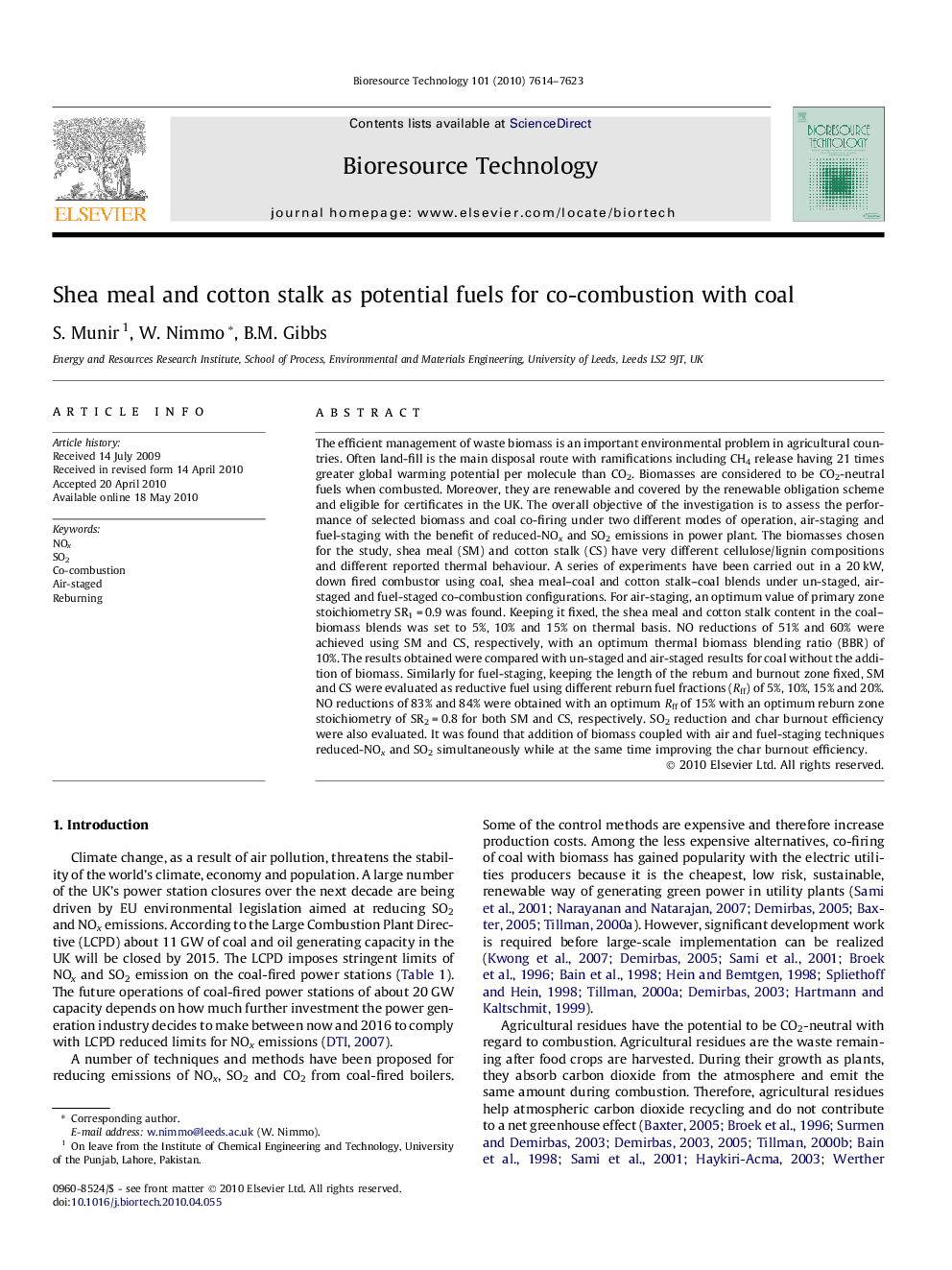| کد مقاله | کد نشریه | سال انتشار | مقاله انگلیسی | نسخه تمام متن |
|---|---|---|---|---|
| 682858 | 888991 | 2010 | 10 صفحه PDF | دانلود رایگان |

The efficient management of waste biomass is an important environmental problem in agricultural countries. Often land-fill is the main disposal route with ramifications including CH4 release having 21 times greater global warming potential per molecule than CO2. Biomasses are considered to be CO2-neutral fuels when combusted. Moreover, they are renewable and covered by the renewable obligation scheme and eligible for certificates in the UK. The overall objective of the investigation is to assess the performance of selected biomass and coal co-firing under two different modes of operation, air-staging and fuel-staging with the benefit of reduced-NOx and SO2 emissions in power plant. The biomasses chosen for the study, shea meal (SM) and cotton stalk (CS) have very different cellulose/lignin compositions and different reported thermal behaviour. A series of experiments have been carried out in a 20 kW, down fired combustor using coal, shea meal–coal and cotton stalk–coal blends under un-staged, air-staged and fuel-staged co-combustion configurations. For air-staging, an optimum value of primary zone stoichiometry SR1 = 0.9 was found. Keeping it fixed, the shea meal and cotton stalk content in the coal–biomass blends was set to 5%, 10% and 15% on thermal basis. NO reductions of 51% and 60% were achieved using SM and CS, respectively, with an optimum thermal biomass blending ratio (BBR) of 10%. The results obtained were compared with un-staged and air-staged results for coal without the addition of biomass. Similarly for fuel-staging, keeping the length of the reburn and burnout zone fixed, SM and CS were evaluated as reductive fuel using different reburn fuel fractions (Rff) of 5%, 10%, 15% and 20%. NO reductions of 83% and 84% were obtained with an optimum Rff of 15% with an optimum reburn zone stoichiometry of SR2 = 0.8 for both SM and CS, respectively. SO2 reduction and char burnout efficiency were also evaluated. It was found that addition of biomass coupled with air and fuel-staging techniques reduced-NOx and SO2 simultaneously while at the same time improving the char burnout efficiency.
Journal: Bioresource Technology - Volume 101, Issue 19, October 2010, Pages 7614–7623